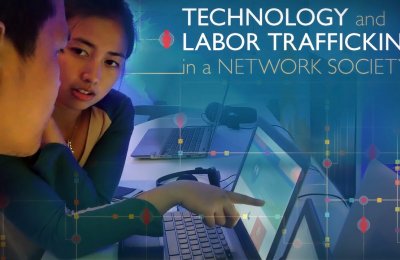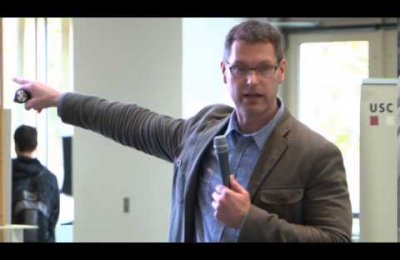Josh Hamilton of the Texas Rangers may not have gone home with a ring, but he earned the social media MVP of the series, based on positive-to-negative sentiment from fans.
Hamilton earned 13 percent of the total tweets and an overall 86 percent positive sentiment rating, edging out the St. Louis Cardinals’ David Freese by 1 percent, the official Major League Baseball MVP of the series.
The USC Annenberg Social Sentiment Index is an ongoing project between IBM and AIL students to explore Twitterology trends, the moods associated with social media communication. Students are using IBM Social Analytics technology to analyze millions of tweets in order to assess public social media engagement and opinion from sports and film to retail and fashion.
Each game averaged a million tweets, totaling seven million total tweets for the entire series as diehard fans exuded their social media voice and opinions on the players and coaches they followed.
IBM and AIL analyzed each game, identifying the players and coaches with the highest tweet volume and most positive sentiment, then generated a final analysis for the series. While it’s obvious that Freese and Hamilton both had stand out performances, other noteworthy findings were revealed through the sentiment analysis, such as:
- Texas manager Ron Washington generated five times more tweets than his counterpart, St. Louis Cardinals’ managerial veteran Tony La Russa.
- Freese earned an 85 percent ‘T’ score – the ratio of positive to negative tweets; Albert Pujols earned an 82 percent positive sentiment rating.
- Texas’ Derek Holland pushed ahead of St. Louis’ Chris Carpenter. Holland garnered the most tweets for any pitcher during the series, and a respectable 82 percent sentiment score. While Carpenter, clearly a star and critical to the Game 7 victor, earned a 75 percent rating.
- Clutch player Lance Berkman from the St. Louis Cardinals earned an 81 percent sentiment score, putting him in close contention for social media MVP.
- Fans appreciated the game’s specialists, such as Arthur Rhodes from St. Louis, who appeared in three World Series games. He got one batter out in each game that he faced, helping him earn a fan high of 94 percent in Game 7.
The analysis found the volume of tweets associated with players and coaches had a strong correlation to the amount of television face time each received during the games – regardless of the caliber of player or coaching performance. What mattered was personality and fans’ affinity for it defined the social sentiment. With each additional game, fans couldn’t wait to turn on the TV and their Twitter accounts, generating a higher TV audience and higher volumes of tweets, igniting the power of fans’ banter, usually limited between themselves and their televisions and inserting it into a measurable voice in the Twitterverse.
"This analysis underscores why the social media element in sports -- and in any industry -- should not be discounted as an unimportant source to glean actionable insights,” said communication professor Jonathan Taplin, director of the USC Annenberg Innovation Lab. “Relying solely on traditional channels to measure fan and customer engagement just won’t cut it anymore.”
IBM and AIL are collaborating to help students explore how analytics technologies can be used by organizations from news outlets and journalists to movie studios and film marketers in order to understand information buried inside Big Data – structured and unstructured information. To date, the Index has been applied to film forecasting in order to accurately predict movie blockbuster success rates, and most recently was used by students to identify top trends for retailers from the New York Fashion Week shows.
With this project, social analytics is proving you can find out how a fan is feeling directly from the fan’s mouth, or in this case, Twitter handle, versus relying on what traditional media is telling us the fans are feeling. The same principle applies in the business world too, social analytics is changing in the way research is conducted as the rise of social media has participants discussing openly what they like and dislike, what their plans are, and so on. For marketers, business analytics may take the place of traditional market research in the future as a growing number of companies start to use the technology to track market sentiment.
In fact, according to IBM’s 2011 Global CMO Study of more than 1,700 chief marketing officers, the majority of the world's top marketing executives admit they are not sufficiently plugged into real-time conversations about their brands. Eighty-percent or more of the CMOs surveyed still focus primarily on traditional sources of information such as market research and competitive benchmarking. Many identified their key challenge as the difficulty in analyzing vast quantities of data to extract meaningful insights that can improve products, services and the customer experience. However, 82 percent of CMOs say they plan to increase their use of social media over the next three to five years.
“While in this case, its fan sentiment, the opportunity to get closer to your customer through social analytics is an opportunity organizations across the industry spectrum can’t afford to miss,” said Rod Smith, vice president of emerging technology, IBM. “Harnessing Big Data for insights is the key to having a competitive advantage.”
IBM's collaboration with the USC Annenberg Innovation Lab is part of its continued efforts to advance student skills in analytics across academia. IBM is working with more than 6,000 universities around the world to develop curricula and provide training, resources and support for business analytics.
Click here to download visuals of the analysis.
Watch an interview with Professor Taplin.
Read Professor Taplin’s blog post about the project at www.asmarterplanet.com
For more information about IBM and analytics, visit www.ibm.com/analytics
About the University of Southern California Annenberg Innovation Lab
The University of Southern California Annenberg Innovation Lab (AIL) is part of the Annenberg School for Communication & Journalism. The lab was established 2010 to develop social and technological innovations with real-world application. AIL brings together scholars, students and the business community to develop digital initiatives and emerging technologies. The lab has increasingly focused on the evolution of social networking as a platform for commerce, entertainment, education and journalism.








